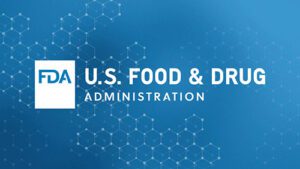 New regulations published in the Federal Register by the Food and Drug Administration (FDA) require traceability of high-risk foods, including seafood, in the latest effort to halt seafood fraud and protect consumers.
New regulations published in the Federal Register by the Food and Drug Administration (FDA) require traceability of high-risk foods, including seafood, in the latest effort to halt seafood fraud and protect consumers.
The final rule, a key component of the FDA’s New Era of Smarter Food Safety Blueprint, implements Section 204(d) of the FDA Food Safety Modernization Act (FSMA). These new requirements will allow for faster identification and rapid removal of potentially contaminated food from the market, resulting in fewer foodborne illnesses and/or deaths, the agency said.
At the core of the rule is a requirement that those who manufacture, process, pack or hold foods on the food traceability list maintain records containing key data elements associated with specific critical tracing events. That information must be provided to the FDA within 24 hours or a reasonable time to which the agency has agreed.
This final rule aligns with current industry best practices and covers domestic, as well as foreign firms, producing food for U.S. consumption, along with the entire food supply chain in the farm-to-table continuum, the FDA said.
The FDA’s action prompted kudos from Marla Valentine, director for the illegal fishing and transparency campaign of ocean conservation nonprofit Oceana. She said that by having key information follow the fish through the supply chain there is less an opportunity for bait and switch, which can cheat consumers and impact their health.
“The FDA rule paired with the Seafood Import Monitoring Program means that some seafood in the U.S. will now be traced from the fishing boat to the dinner plate,” Valentine said.
Seafood fraud, specifically species substitution, occurs regularly, cheating consumers and putting public health and the oceans in jeopardy. Oceana noted that a global review of seafood fraud studies around the world found that one in five of the more than 25,000 samples of seafood tested worldwide was mislabeled.
According to the National Oceanic and Atmospheric Administration, the U.S. currently imports up to 85% of its seafood. That seafood often follows a complicated path from fishing vessel to plate, creating multiple opportunities for fraud that can occur at each step in the supply chain.
It’s a complicated process in which consumers’ ability to differentiate what is safe and what is potentially dangerous is a challenge. With more than 2,000 different species of seafood from all over the world now available for sale in the U.S., it is unrealistic to expect the American consumer to be able to independently and accurately determine what fish is really being served, Oceana officials said.
Seafood in general is extremely sensitive to proper handling and refrigeration and in some cases can cause severe illness if not correctly handled.
Despite these risks, Oceana said, consumers are often given inadequate, confusing or misleading information about the seafood they purchase because of weak regulations.
Each year in the U.S., some 260,000 people are taken ill from contaminated fish. Fish are the most common food category implicated in foodborne illness outbreaks, according to Oceana data.
In January 2021, Oceana released results of a nationwide poll that found Americans overwhelmingly support policies to end illegal fishing and seafood fraud. Among the key findings, 89% of responders agreed that imported seafood should be held to the same standards as seafood caught in U.S. waters. In addition, 81% of respondents said they supported policies that prevent seafood from being sold in the U.S. that was caught using human trafficking and slave labor.
The majority of respondents, 83%, also agreed that all seafood should be traceable from the fishing vessel to the dinner plate, and 77% supported requirements for all fishing vessels to be publicly trackable, according to the Oceana report.
